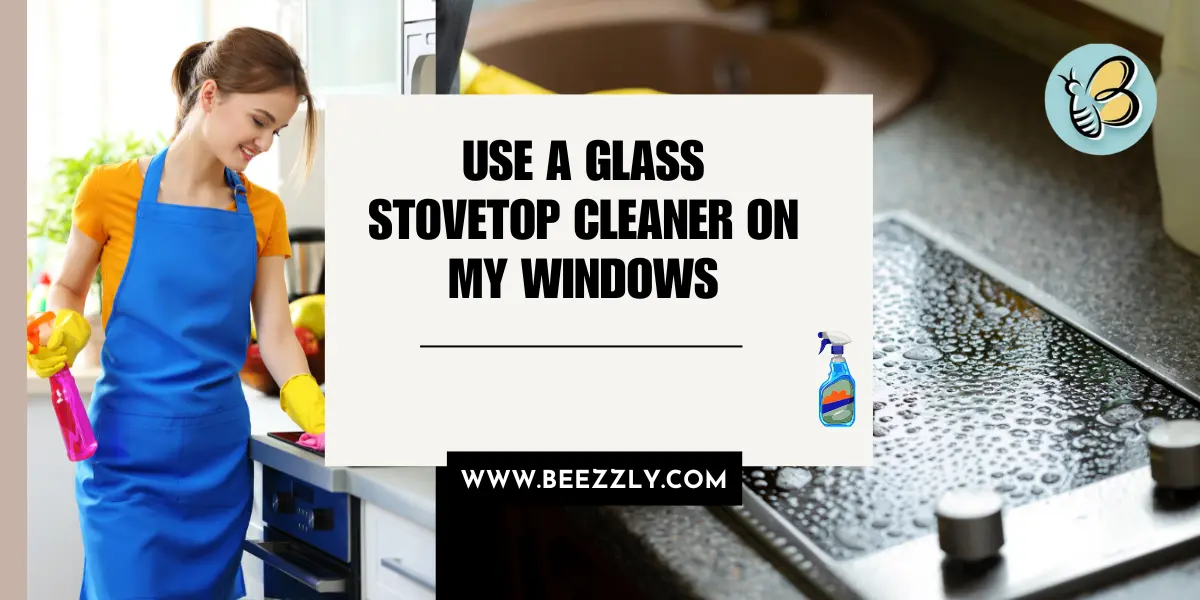You have been tackling that list of home cleaning tasks—polishing the stove, scrubbing the counters, and now you’re eyeing those smudged windows. We are sure, this question landed you here, “Can I use my glass stovetop cleaner to make my windows sparkle too?” It seems like a handy, one-product solution, but is it really the best choice?
As DIY enthusiasts, homeowners, and cleaning experts, we know you love finding resourceful, efficient solutions. We all search for ways to simplify our work and cleaning is not an exception. We have created this guide to walk you through everything you need to know about using glass stovetop cleaner for windows and when it might not be the best idea.
The Real Issue: Convenience vs. Results
You are probably looking for a multi-use cleaner that does more than just sit under the kitchen sink. But before you reach for that stovetop cleaner, let’s explore whether it’s worth the effort, cost, and results when cleaning your windows.
What Are Glass Stovetop Cleaners and How Do They Work?
Glass stovetop cleaners are designed to tackle the tough, baked-on messes that accumulate from cooking. They often come in a thicker formula, requiring buffing to achieve a smooth, polished shine on your stovetop. These cleaners contain abrasives and chemicals tailored to break down grime and leave glass surfaces streak-free.
How Are Glass Stovetop Cleaners Different From Window Cleaners?
Unlike stovetop cleaners, window cleaners are formulated to be lighter, easy to spray, and wipe off quickly without leaving streaks. Window cleaners are designed for vertical surfaces, allowing them to dry fast while avoiding residue buildup. On the other hand, stovetop cleaners are made for flat, horizontal surfaces where they can sit and dissolve dirt effectively.
Can You Use a Glass Stovetop Cleaner on Windows? Yes, But…
While glass stovetop cleaner can work on windows in a pinch, it’s not an ideal replacement for regular window cleaner. Here’s when you might consider using it:
- If you’re out of your usual window cleaner.
- If there’s a stubborn smudge or grime that won’t come off with regular window spray.
- If you’re cleaning both your stove and a nearby window at the same time and want to save a step.
Step-by-Step Guide: How to Use Glass Stovetop Cleaner on Windows

- Gather your materials: You’ll need your glass stovetop cleaner, a microfiber cloth, and a dry towel for buffing.
- Apply a small amount: A little goes a long way. Dab a small amount of cleaner onto your microfiber cloth.
- Work in sections: Unlike spray-on window cleaners, stovetop cleaners need a bit of elbow grease. Apply the cleaner in circular motions on the window.
- Let it sit for a minute: Give it time to break down any grime, especially for sticky fingerprints or grease.
- Buff with a dry towel: This step is crucial. Use a dry towel to buff out any residue, ensuring the window is streak-free.
- Check for any spots: Wipe off any remaining cleaner or streaks with a damp cloth if necessary.
Why I Won’t Be Using This Trick Again
Although glass stovetop cleaner can work on windows, there are two reasons I wouldn’t rely on it regularly: effort and cost.
- Effort: It took about 90 seconds to clean a small part of the window using the glass stovetop cleaner. Compare that to using a regular spray cleaner, which can clean the entire window in the same time with far less buffing.
- Cost: The price difference is noticeable. Glass stovetop cleaners tend to be more expensive than traditional window cleaners. Additionally, window cleaners typically last longer since you use less product per cleaning.
When Should You Use a Glass Cooktop Cleaner for Windows?
While I don’t recommend it as your go-to window cleaning method, there are situations where it could come in handy:
- In a pinch: When you run out of window cleaner but still need to remove smudges or streaks.
- For spot-cleaning: If you’ve just finished cleaning your stovetop and notice a nearby window smudge, a quick application can work wonders.
Alternatives to Cleaning Your Windows
If you’re looking for more efficient and cost-effective ways to clean your windows, here are some tried-and-true options:
- Vinegar and water: A natural and affordable solution that leaves windows streak-free.
- Commercial glass cleaners: Affordable, effective, and easy to use.
- Microfiber cloths: These trap dust and dirt without leaving streaks, making them perfect for touch-ups.
- Newspaper: For a streak-free finish, newspaper can work wonders on glass without scratching the surface.
Bonus DIY: How to Pressure Wash Your Fence (and How Often You Should Do It)
Looking to expand your DIY cleaning repertoire? Pressure washing is a great way to restore the look of your fence. It’s recommended to pressure wash your fence at least once a year to remove dirt, mildew, and grime. Here’s how to do it:
- Use a low-pressure setting to avoid damaging the wood.
- Keep the nozzle moving to prevent streaks.
- Apply a cleaning solution if necessary, and always follow up with a sealant.
Final Thoughts
While you can use a glass stovetop cleaner on windows, it’s not the most efficient or cost-effective method. We recommend you to try dedicated window cleaners or natural alternatives like vinegar and water for the best results. However, if you’re in a bind or just love experimenting with DIY cleaning methods, stovetop cleaner might do the trick for a quick fix. Just don’t expect it to replace your trusty spray-on glass cleaner anytime soon.
